
DEEP INTO THE COMMUNITY
Black Diamond Athlete Angela Hawse is a guide for change.
You're eligible for Free Shipping!
$0.00 USD
TUESDAY, DECEMBER 12, 2017
I’m old-school. I clip in with draws when cleaning a sport anchor, I don’t wear a helmet when I’m sport climbing, and I use just the rope with a clove hitch to tie myself into the anchor when I get to the belay of a multi-pitch climb. When I’m rappelling off a route, I’ll use a couple of shoulder slings to tether myself in at each anchor. My personal philosophy is that I like having the least amount of stuff on me as possible, and the reality is I have the rope, and I have the slings—so why not use them?
Historically people have used daisy chains (incorrectly) as tethers. The pockets on daisy chains are typically quite weak—between 2-5kN, and the potential for mis-clipping a daisy (across the tack) is real:
Daisy chains should really be used for aid climbing and not as a personal tether.
So, what are people to do? Well, as climbing evolves, things change, and over the last several years “Personal Anchor Systems” (a nice descriptive term coined by our friends at Metolius) have really seemed to have taken over—especially with the next generation of climbers. And as always with change and new equipment or techniques, there are often questions that arise: “Do I wear it thong style?” (pro-tip: no). “How strong should a personal anchor system be?” “Can’t I just use a daisy chain?” “And what happens if I fall onto a Personal Anchor System?”
From what I’m hearing, climbers are generally concerned about the ultimate strength of the way they are securing themselves to an anchor. Climbers seem to really focus on the ultimate strength of things—like carabiners, cams, a knot, etc.— because it’s generally easy to understand. What is the strongest? Is it “full strength?”
There are many styles of these anchor systems sold, from sections of rope with sewn ends like a few styles from Beal, a device that incorporates a piece of rope from Petzl, a series of individual belay type loops sewn together into a continuous chain, either out of nylon or a dyneema/nylon combination, from Grivel, Metolius, Sterling, and BD. As well as many other different styles, I’m sure.
On the chain-of-loops style, sometimes there are no rated loop strengths, and sometimes there are—some are even rated to 22kN, as is the case with the Black Diamond Link Anchor System which allows it to be certified to the EN standard EN566:2006 as a sling. Because as I mentioned above, some folks like strong things. The attractiveness of these is that each loop on its own is ‘strong’ as opposed to a daisy chain which has typically weak loops or pockets.
Probably the most important thing to realize about using any type of these devices, or when you’re tied into the anchor in any fashion, is that they should be considered a TETHER. They are to secure yourself to the anchor—in case you were to slip, or need to hang for a hanging belay. That’s it. They’re not really intended to take a FALL. The reality is, if used properly and in typical climbing scenarios, these should rarely see over 2 or 3 times body weight at most. You should always try to avoid putting yourself into a situation where you could fall onto your tether. Because no matter what you’re using, the amount of material in the system is usually quite short. This means there isn’t much ability for the system to absorb energy and the loads can get high quickly. This can be hard on you, the climber, and on the anchor. Don’t fall onto your personal anchor system.
We’ve all probably heard by now that in general, Nylon absorbs more energy than Dynex because Dynex doesn’t stretch. But we figured we’d do some quick and dirty tests in the drop tower just to give you an idea of the differences in the load that the anchor sees—depending on which material you’re using.
Personal Anchor System (PAS) – a trade name for the Metolius Personal Anchor System which has been adopted by the public as a generic term for these types of anchoring devices that allow you to tether yourself to an anchor.
Fall Factor – the distance you fall divided by how much rope or material you have in the system.
Dynex/Dyneema/Spectra – for the sake of argument – all the same stuff – UHMWPE – (Ultra-high-molecular-weight polyethylene) low stretch, super strong, lower melting temperature than nylon. I’ll call it Dynex because that’s how we refer to it here at BD. In this case, all samples in this category tested were a combo of Dynex and Nylon. In general, Dynex is white, and Nylon has color.
Disclaimer
I always need to put a disclaimer in here. The whole purpose of this column is to try and shed light onto some common questions. It is not intended to be a definitive study with conclusive results. If this info and data sparks conversations and gets people thinking about what they’re doing out in the hills, then mission accomplished.
We decided to look at two things:
Ultimate Strength Setup
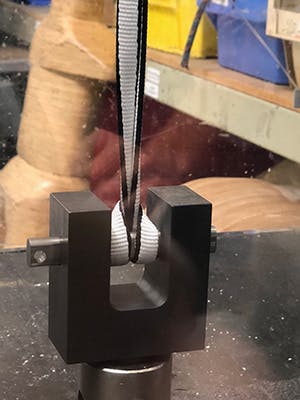
Girth hitched to 10mm pin
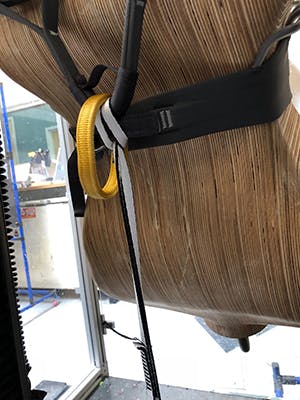
Girth hitched to BOTH tie-in points
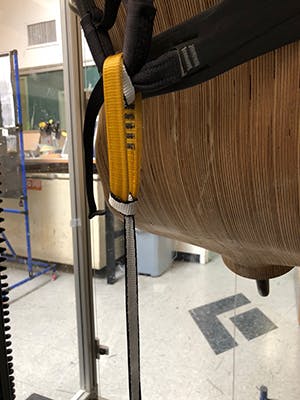
Girth hitched to belay loop
Drop Tower Setup

Another Disclaimer
The drops we do in our drop tower are harsh. They’re so harsh that they pretty much can’t directly correlate to what you would see in a real-world field situation. We use a rigid steel mass—there is absolutely no give. Of course, if a person wearing a harness were in the system, some energy would be absorbed by the harness, the gelatinous human body, etc. However, as is the case when performing experiments, you want to try to make them as repeatable as possible, so we use a rigid steel 80kg mass on tracks. When looking at this data, remember, it’s comparative.
Acknowledging that you should try to never put yourself into a position where you could shock load an anchor system, we decided to perform a set of tests as if you were tethered in at a 60cm length and fell.
60cm tether, FF0.5 and FF1
Why 60cm? Well as I said in the intro, when I’m descending a multi-pitch route, I’ll often clip in with a 60cm sling (actually 2), but what would happen if I was only clipped with one and slipped and loaded the belay with a Fall Factor 0.5 or Fall Factor 1? That’s what this test simulates. And for the sake of consistency we set all ropes, devices, etc. at a 60cm length.
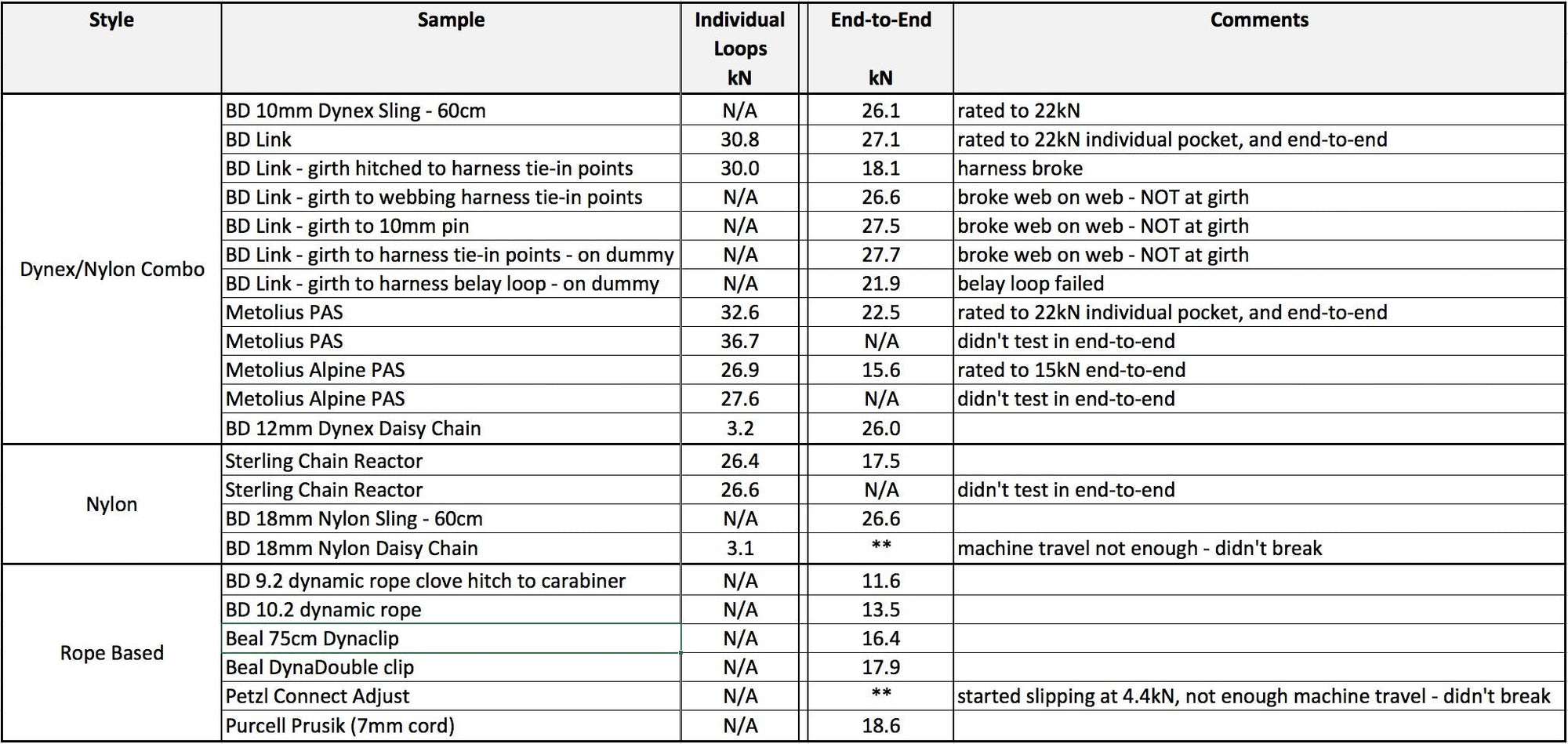
The Samples
We rounded up what we could and ended up with quite a cross section of samples. A special thanks goes out to our friends at Metolius, Sterling, Petzl and Liberty Mountain for providing their anchor systems and allowing us to break them.
Here’s what we tested:

Comments – Static Tests
Static Tests – Individual Pockets, and end-to-end
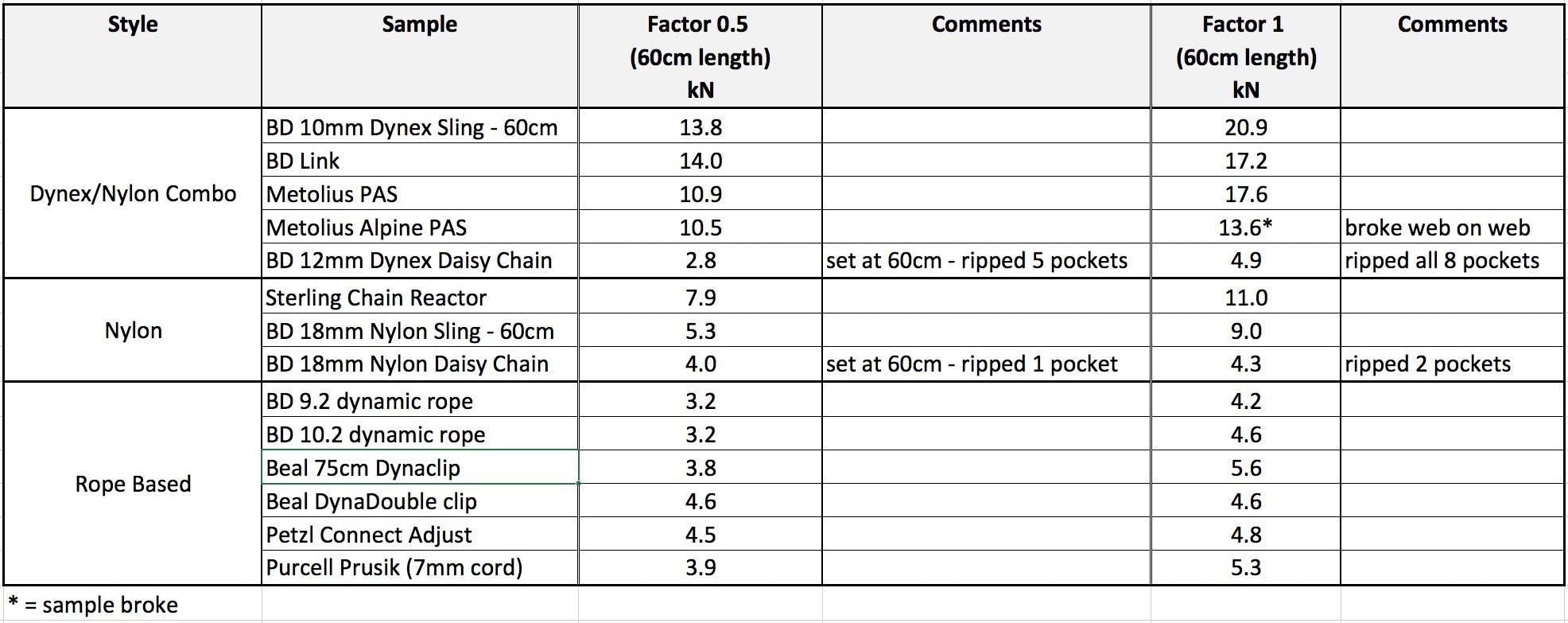
60cm tether, FF0.5 and FF1

Comments – Dynamic Tests
60cm tether, FF0.5 and FF1
CONCLUSIONS
Static Tests
Dynamic Tests
As I said above, this is far from conclusive. An eager engineering student could do their fourth-year project on variants of these tests including:

I often get asked if it’s best to girth hitch a sling or Personal Anchor System to your belay loop or your tie-in points. Of course you should always follow the specific manufacturer's recommendations, however, here at BD, we recommend girth hitching to BOTH of your tie-in points.
Personal Anchor System Instructions
Here’s the rationale:
I like the rule of thumb that the ACMG (Association of Canadian Mountain Guides) uses: belay loops for metal (i.e. carabiners) and tie-in points for fabrics (i.e. ropes and slings). It just keeps your belay loop nice and clean for what it’s used for… belaying.
Also, if you were to girth your tether to your belay loop, then really what you’ve done is limited its ability to rotate. This can result in excessive wear on the underside of the belay loop which is not easily visible. In the worst case, this could lead to an accident similar to what tragically happened to Todd Skinner many years ago when he had a daisy chain semi-permanently girth hitched to his belay loop which eventually wore through.
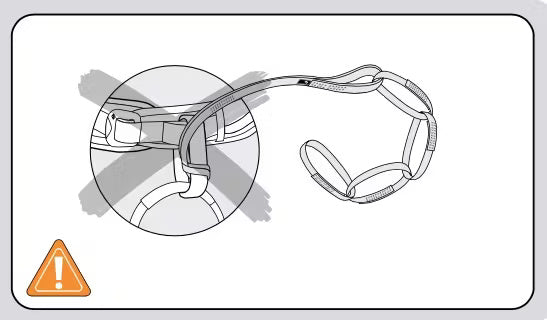
A special thanks to Matt Berry, one of our crack crew of BD Quality Engineers who spent his afternoon in the drop tower breaking this stuff for us. And to another one of our gear destroyers, Matt Tetzl, for breaking these samples in our tensile tester. (Yes, we have a lot of Matts here at BD.)
And once again, I’d like to thank our friends at Metolius, Sterling, Petzl and Liberty Mountain for providing their anchor systems for this post.

I’m still old school and still use a clove hitch to tie into the anchor with the rope, because I have it with me. But if you’re a climber that likes the security of a Personal Anchor System, that’s awesome—just know as I said above you should always try to avoid putting yourself in situations where you can shock load the system—because you’re gonna feel it.
Be safe out there,
KP
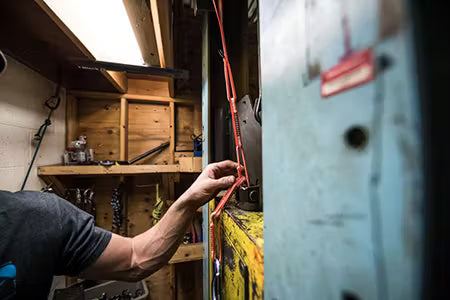
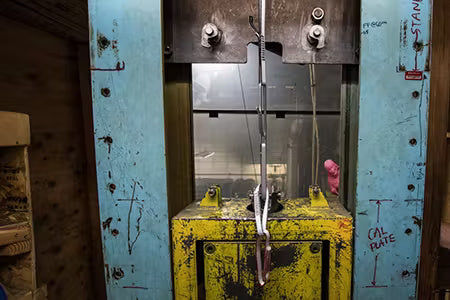
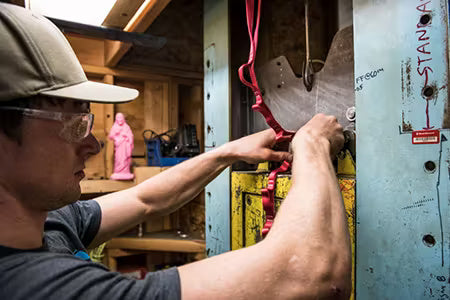
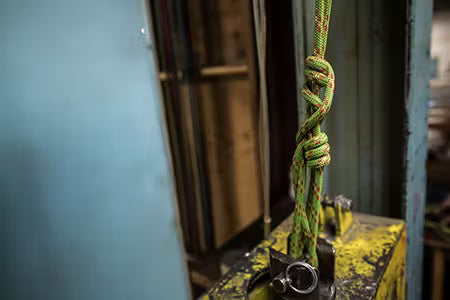
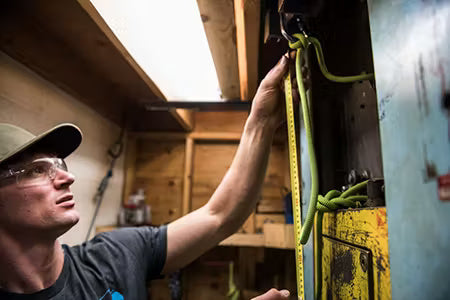
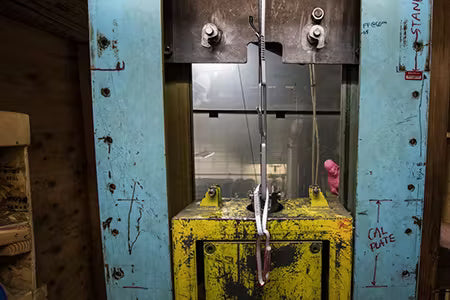
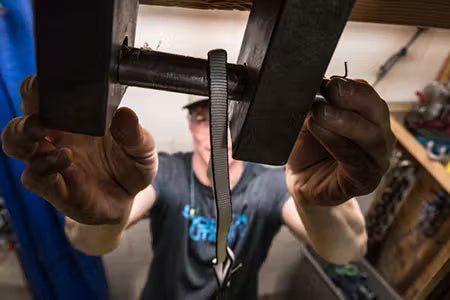

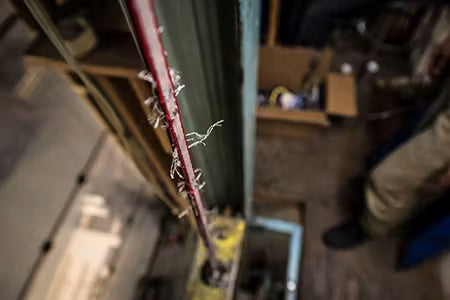




Follow BD Athlete Yannick Glatthard deep into the Swiss Alps as he shares his home...
Follow BD Athlete Yannick Glatthard deep into the Swiss Alps as he shares his home mountains with close friends.

Follow Dorian Densmore and Mya Akins for another winter season of steep Alaskan spines, backyard...
Follow Dorian Densmore and Mya Akins for another winter season of steep Alaskan spines, backyard couloirs, and deep adventures in the mountains.
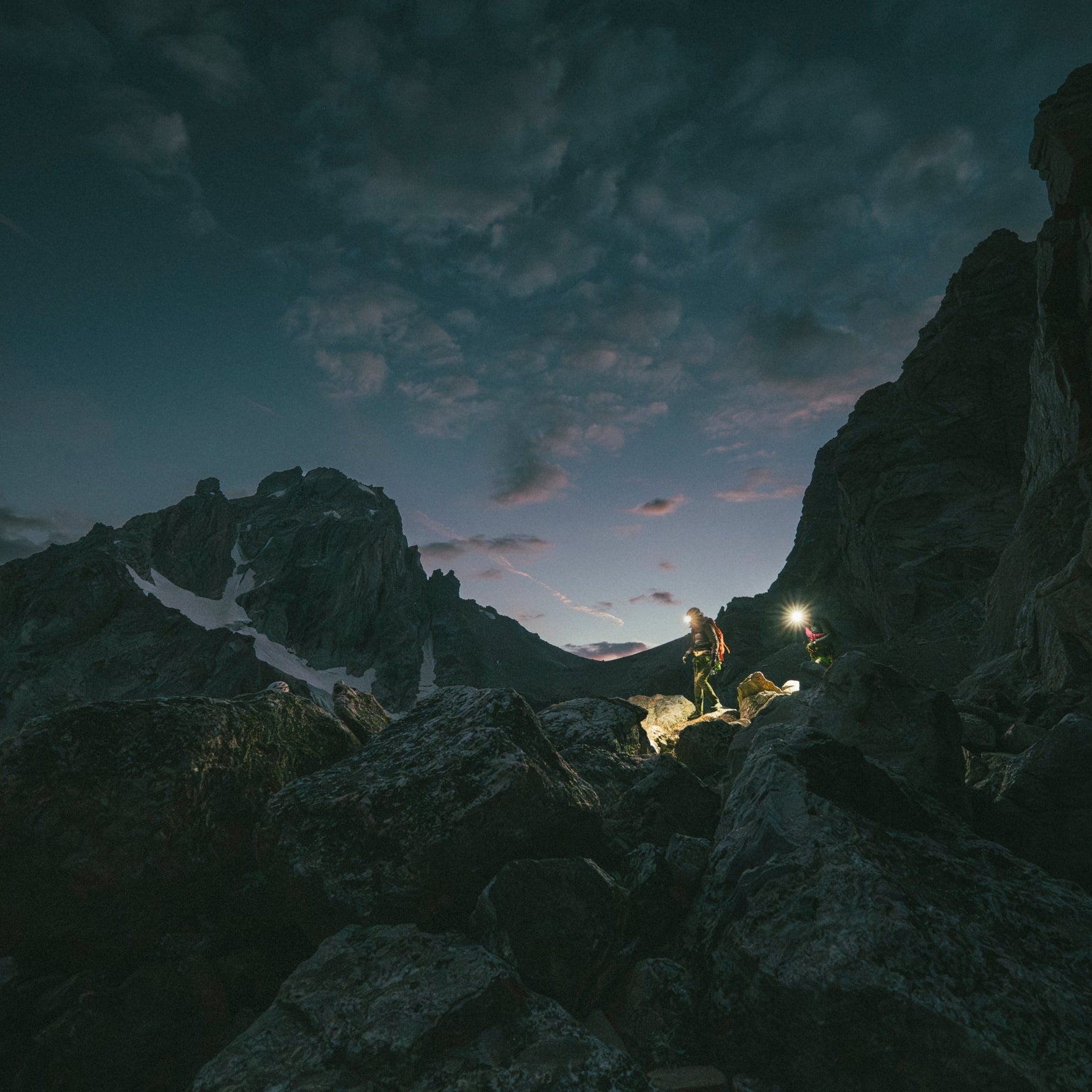

Watch BD Athlete Alex Honnold throw down on some hard trad high above Tahoe.
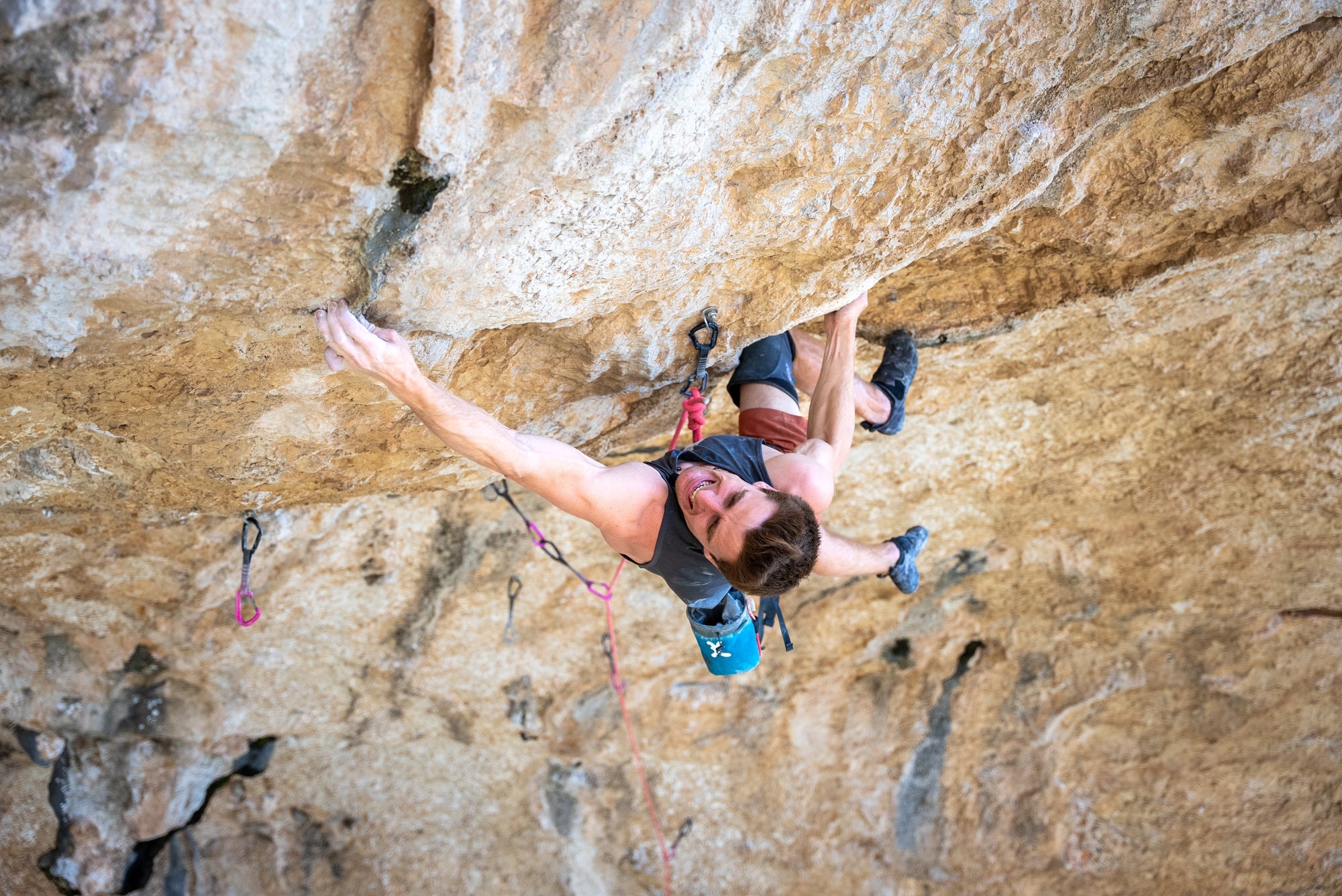
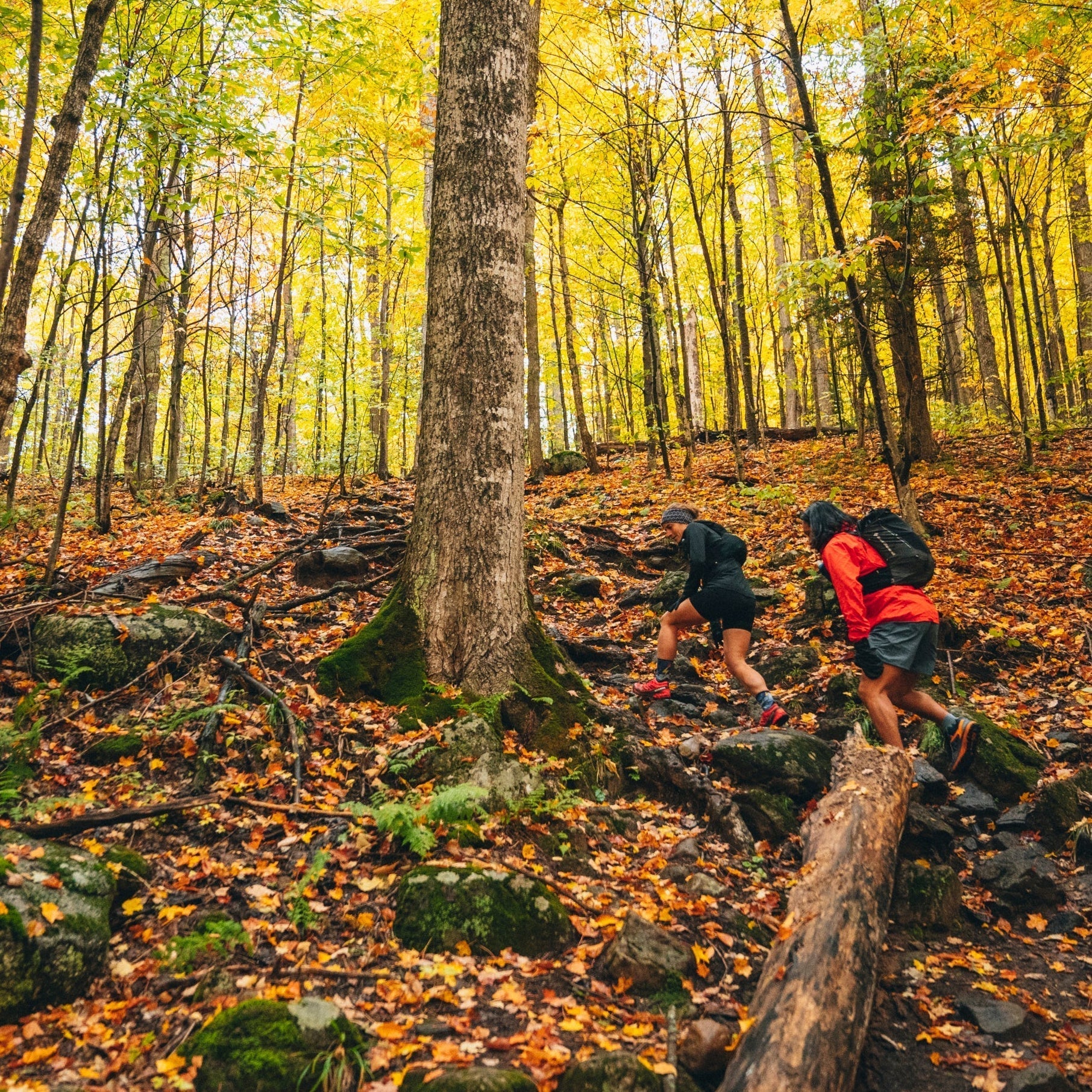
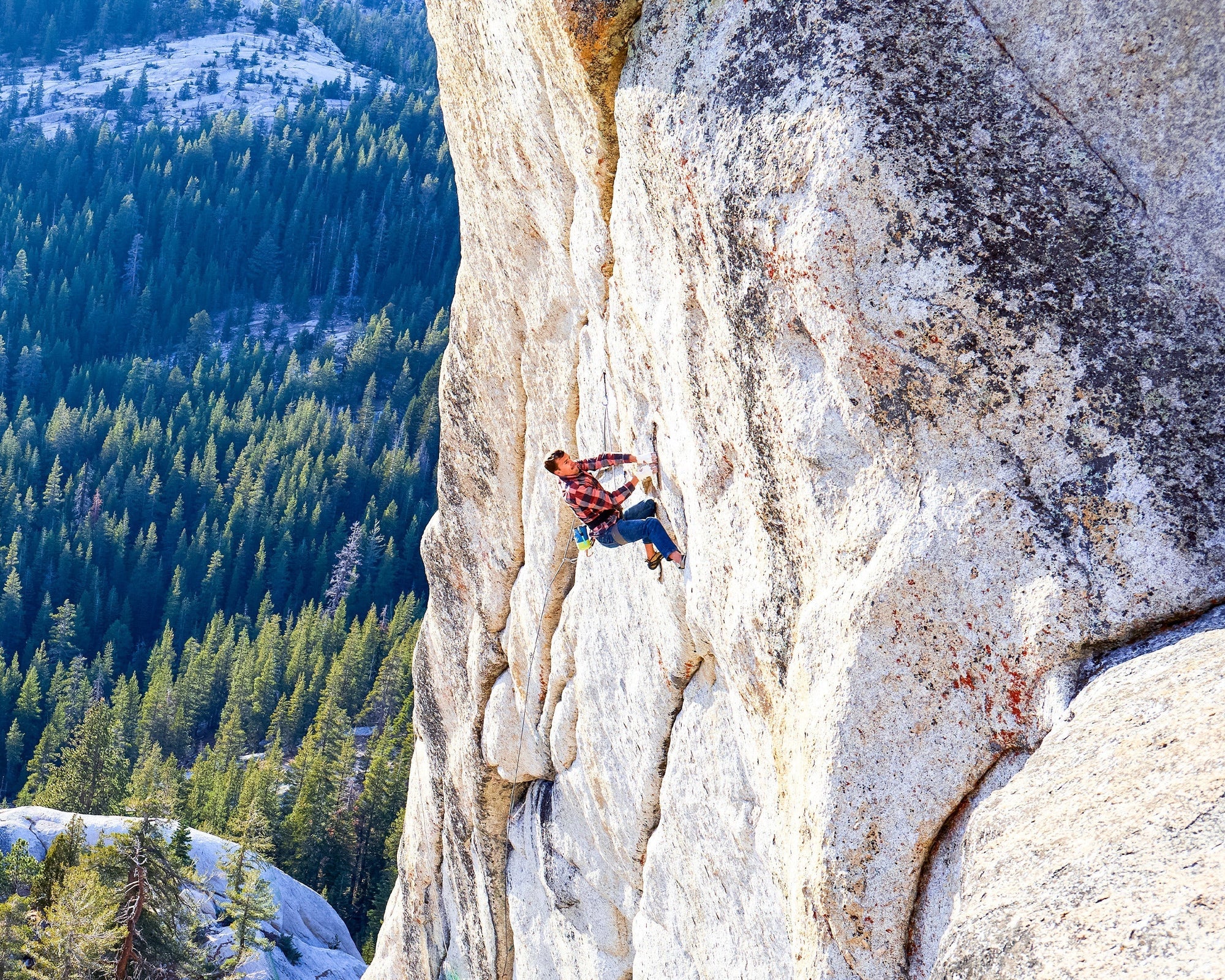
In 2012, filmmaker and photographer Ben Ditto, and professional climber Mason Earle equipped an immaculate...
In 2012, filmmaker and photographer Ben Ditto, and professional climber Mason Earle equipped an immaculate line in Tuolumne’s high country. But their attempts to free the route were thwarted when Mason’s life changed drastically. With the help of Connor Herson, Ditto and Mason found a way to keep the dream alive.
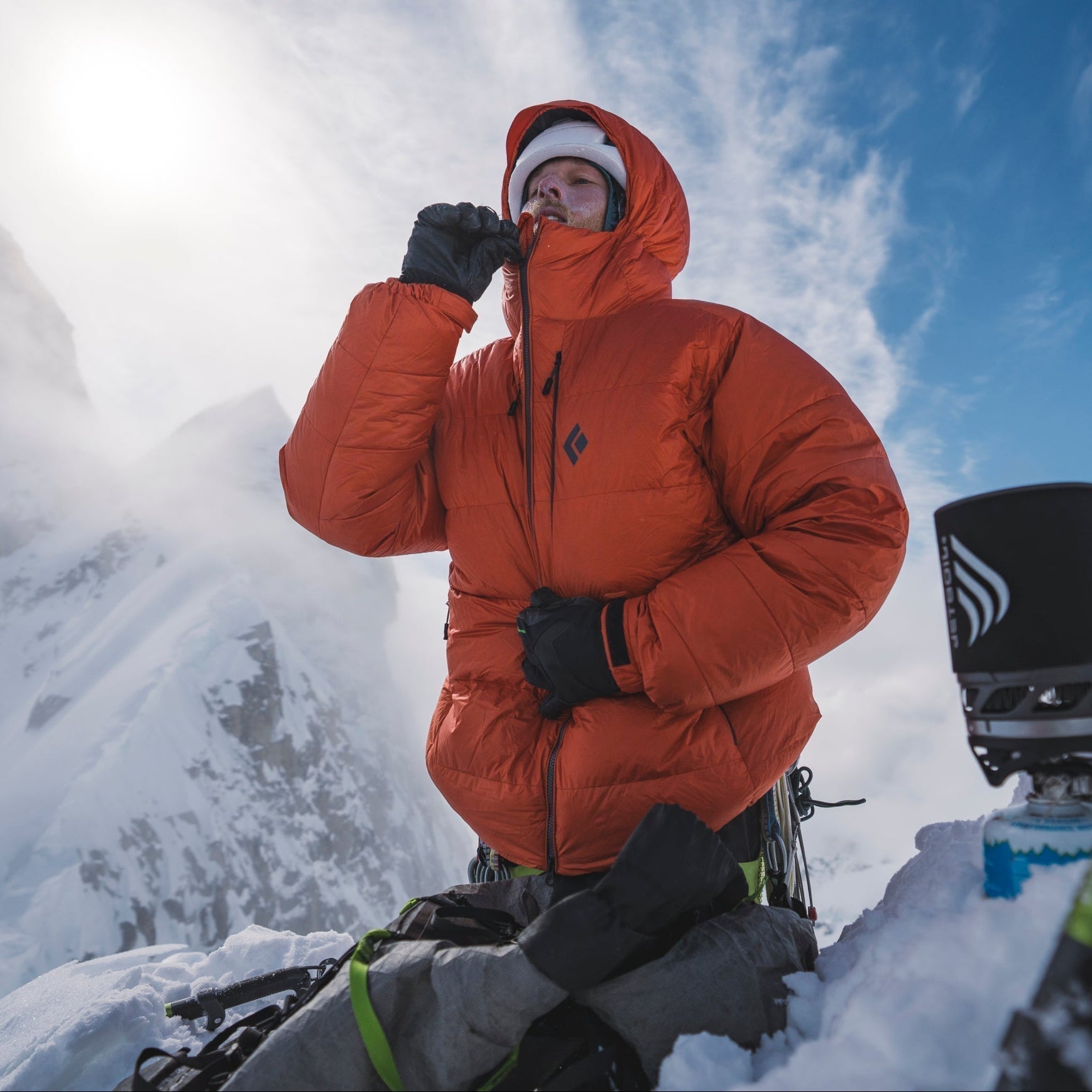
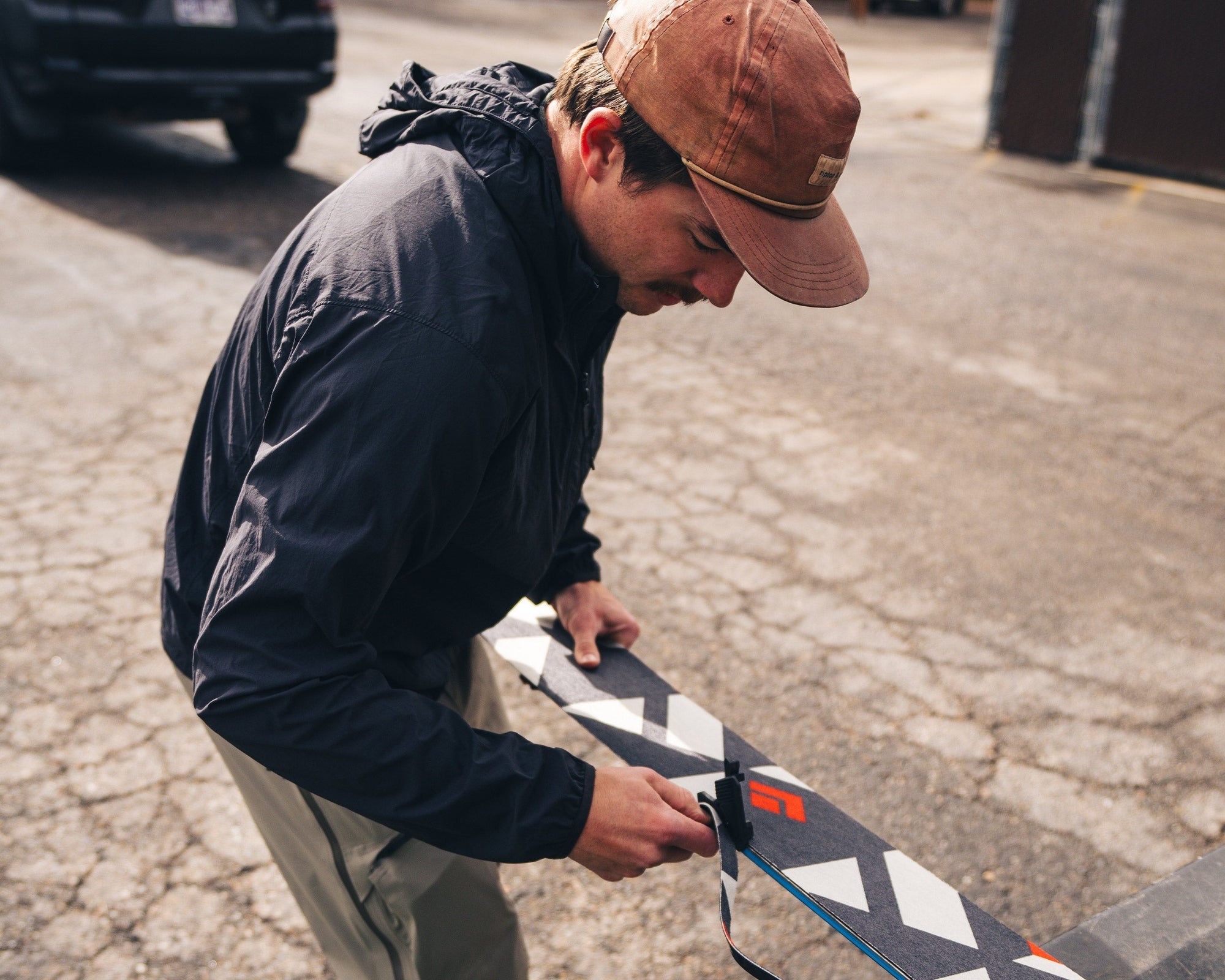
Watch and learn as our Field Test Coordinator runs you through a step by step...
Watch and learn as our Field Test Coordinator runs you through a step by step process of trimming and setting up any STS-style Black Diamond skin.


Every climber has a few lines they dream about. Whether inspired or haunted—or sometimes both—these...
Every climber has a few lines they dream about. Whether inspired or haunted—or sometimes both—these lines can push us beyond what we thought we were capable of, in turn teaching us who we really are. BD Ambassador Ethan Salvo recently restructured his entire life to focus on two climbs that pulled him into the void with only one way out … getting to the top. This is his story of sending Dreamcatcher and becoming the first Canadian to climb V16 in the same week.
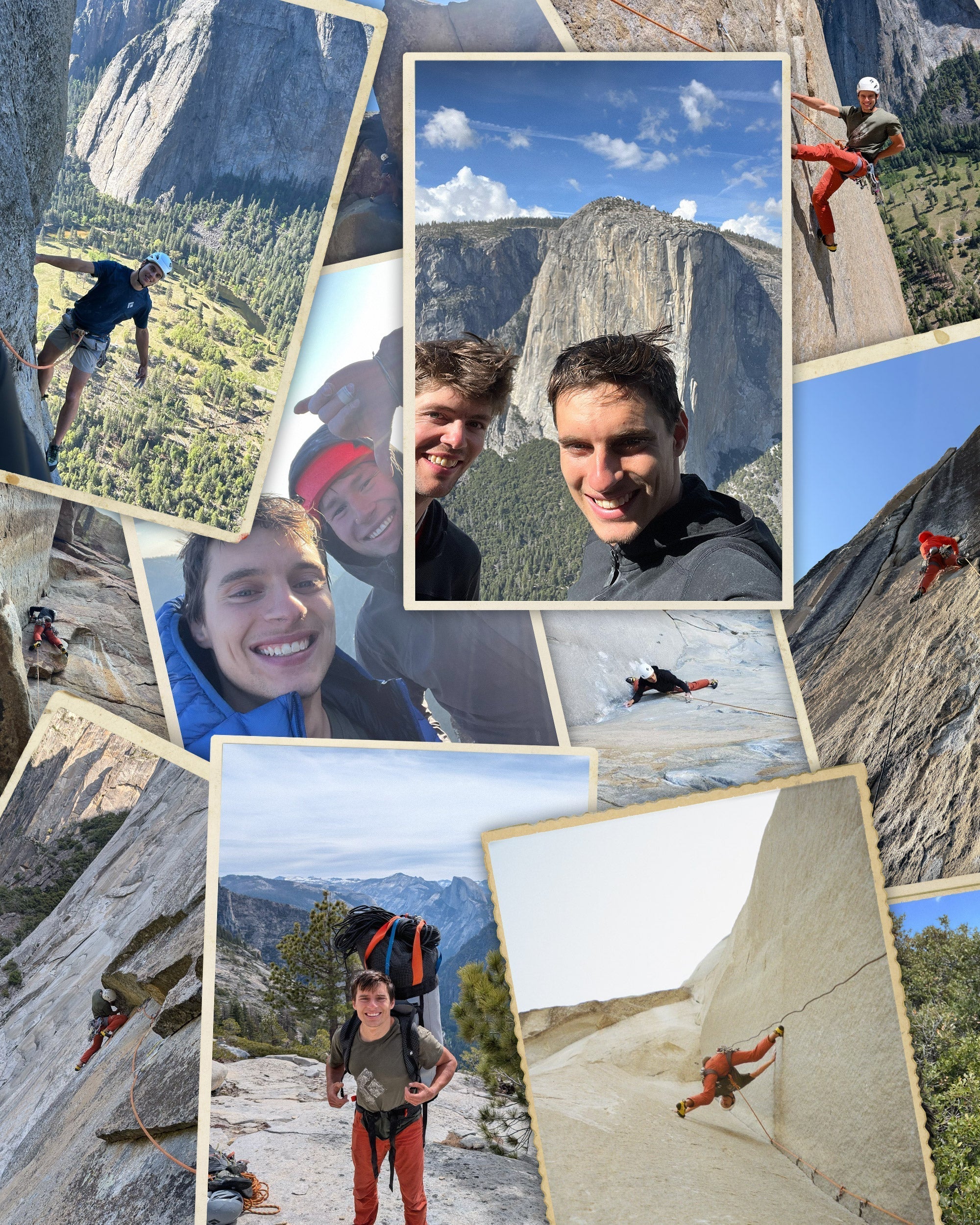
BD Athlete Connor Herson spent as many weekends as possible in the Valley this spring...
BD Athlete Connor Herson spent as many weekends as possible in the Valley this spring during a grueling quarter at Stanford. The objective? Ground up, in-a-day ascents.
